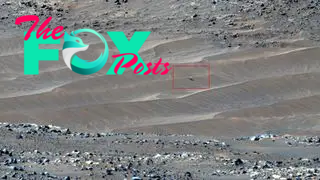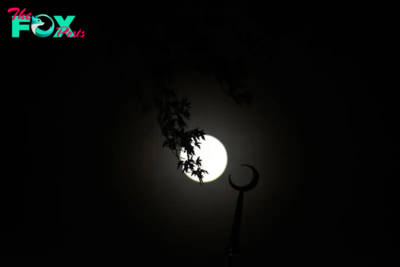Science
NASA's downed Ingenuity helicopter has a 'last gift' for humanity — but we'll have to go to Mars to get it
NASA's Ingenuity Mars Helicopter has beamed back its final message to Earth, which included a heart-warming goodbye to mission scientists. The record-breaking robot will now spend the rest of its days collecting data that could be used in future Mars missions — but only if future robots or astronauts go all the way to the Red Planet to get it.
The pigeon-size helicopter, or rotorcraft, first landed on the Red Planet on Feb. 18, 2021, alongside the Perseverance rover, and it successfully completed the first-ever powered flight on an alien world on April 19 of the same year.
The Ingenuity mission's initial goal was to fly five missions across 30 days. But the tiny chopper ended up flying 72 times on Mars, spending more than two hours in the air and Traveling 14 times farther than initially planned, according to a statement by NASA.
However, during what turned out to be its final flight on Jan. 18 this year, the flying robot crash-landed after briefly losing contact with NASA controllers. The helicopter only dropped from around 3 feet (1 meter) above the ground, but it sustained irreversible damage to two of its four rotor blades, with part of one blade later spotted on the ground near the chopper. As a result, the mission officially ended on Jan. 25.
On April 16, Ingenuity beamed back its final signal to Earth, which included the remaining data it had stored in its memory bank and information about its final flight.
Related: Mars helicopter photographs wreckage of its own landing gear in eerily desolate image

Ingenuity mission scientists gathered in a control room at NASA's Jet Propulsion Laboratory (JPL) in California to celebrate and analyze the helicopter's final message, which was received via NASA's Deep Space Network, made up of ground stations located across the globe.
-

 Science31m ago
Science31m agoHow to See the ‘Beaver’ Supermoon—the last of 2024
-

 Science4d ago
Science4d agoInside Capitol Hill’s Latest UFO Hearings
-

 Science4d ago
Science4d agoYou Won’t Want to Miss the Leonid Meteor Shower. Here’s How and When You Can See It
-

 Science5d ago
Science5d agoHere’s What Trump’s Win Means for NASA
-

 Science1w ago
Science1w agoWhy Risky Wildfire Zones Have Been Increasing Around the World
-

 Science1w ago
Science1w agoIt’s Time to Redefine What a Megafire Is in the Climate Change Era
-

 Science1w ago
Science1w ago4 Astronauts Return to Earth After Being Delayed by Boeing’s Capsule Trouble and Hurricane Milton
-

 Science1w ago
Science1w agoThe Elegance and Awkwardness of NASA’s New Moon Suit, Designed by Axiom and Prada



























